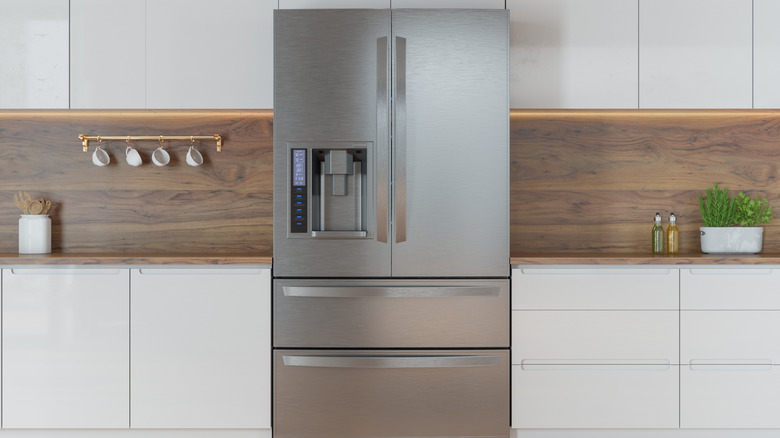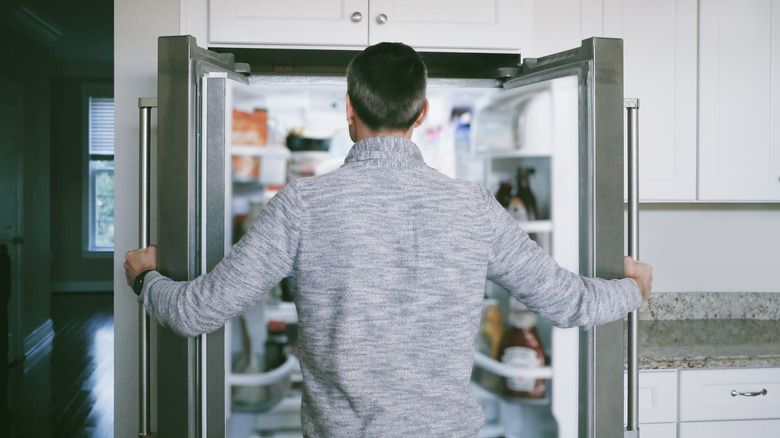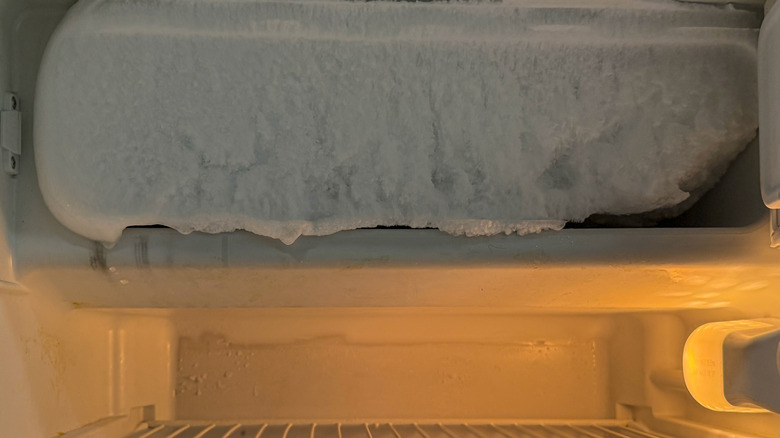How Much Electricity Does A Refrigerator Use?
Whether it's the middle of summer and you're running air conditioning to beat the heat, or the thick of winter when heat is essential to avoid freezing, it can be tough to keep energy costs down. It can feel like there's no way to lower your home's energy bill with all of the appliances in need of power. That's why it's important to identify the common mistakes you're making that are increasing your electric bill and take appropriate action. A good starting point is to break down your energy use by considering the amount of energy each of your appliances uses. For example, how much energy does something like a refrigerator use?
Unfortunately, there's not a one-size-fits-all answer to the question of fridge energy use. It depends on several factors, from size to temperature settings to age, though the typical range for modern refrigerators is somewhere between 300 and 800 watts. Watts only concern the power needed for a fridge to operate. As for kilowatt-hours, which measure the amount of energy consumed in one hour, there's also variation here. The Frigidaire model FFHI1835V has an annual energy use of 453 kWh per year, the LG models LRBN20512 and LRBC20512 use 482 kWh per year, and the Samsung RT18M62*5** uses 448 kWh per year, to name a few prominent brands' offerings.
Since not all refrigerators use the same amount of energy, you may wonder, what does your model's energy use look like? Here's how to find this stat and the cost it incurs.
Determining your fridge's energy use and cost
If you're curious about your refrigerator's kilowatt hours over the course of a year, it's not difficult to figure out. Most modern refrigerators have a yellow and black EnergyGuide label that indicates the average annual kilowatt-hour usage. If you don't have access to this label, then it's time to get out the calculator. You'll at least need to know your fridge's wattage, which is then multiplied by the number of hours in use and divided by 1000. This provides your daily kilowatt-hour consumption. Then take this number and multiply it by 365, the number of days in a year, to get your kilowatt-hour usage per year.
As for the overall financial bearing your refrigerator has on your energy bill, this too can be found on the EnergyGuide label. It should tell you the approximate monetary contribution your fridge has on a year's worth of energy bills, but, again, if you don't have the label intact on your fridge, you can calculate your model's yearly operating costs with only a few numbers. You start with your kilowatt-hour rate, which is then multiplied by the electricity use rate. The latter is commonly found on your utility bill, so you'll need that if you want the most accurate calculation possible. Additionally, there are online energy use and cost calculators, such as those from Energy Use Calculator and EnergyBot.
Models from the best and worst refrigerator brands out there will have some bearing on your energy bill. While it would be difficult to cut your fridge usage entirely, there are ways to reduce its impact on your energy consumption.
Ways to make your fridge more energy and cost-efficient
Though you really have no choice other than to let your refrigerator consume energy, there are steps to make it less prominent on your energy bill. One of the most drastic steps to consider is replacing your old, less energy-efficient fridge with a new, more energy-efficient model. Energy Star's website features a "Flip Your Fridge" calculator, which can tell you how much more energy-efficient and money-saving a new Energy Star-approved unit could be compared to your current model. Of course, fridges are expensive, so unless your fridge is showing signs it's about to break, or has failed already, it's probably in your best interest to try other, cheaper strategies in the meantime.
A big help is using your fridge responsibly, which means keeping the door closed, maintaining a fridge temperature between 37 and 40 degrees, and keeping the freezer at 0 degrees Fahrenheit. Additionally, keeping the fridge full helps reduce the retention of warmer outside air. There are also maintenance tasks that can reduce energy use, including cleaning the coils at the back of the fridge when dirt and dust build up. This will allow the free flow of heat, so the fridge doesn't have to work as hard to expel it. You should also carefully defrost your freezer when ice builds up between a quarter and half an inch in thickness. Otherwise, your freezer will have a harder time maintaining the temperature of your food.
From month to month, your refrigerator is going to suck up power and contribute to your energy bill. A lot can impact the extent to which it will, so it's a good idea to control what you can to keep your food fresh and costs as low as possible.


